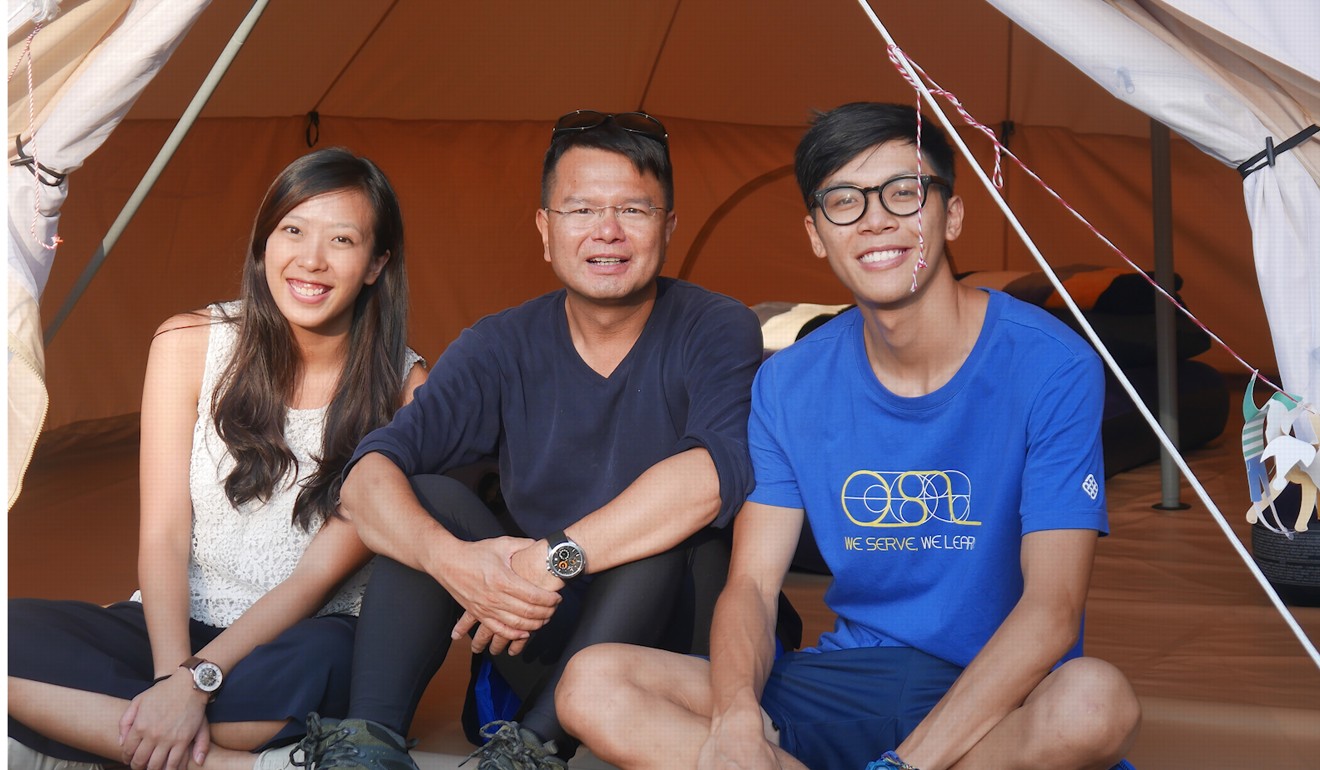
Why Hong Kong’s glamping scene is gaining ground, but slowly
Most tourists and locals in Hong Kong avoid the great outdoors, concentrating on urban activities such as shopping. We meet some of the people trying to change this by offering a compromise: camping with extra home comforts
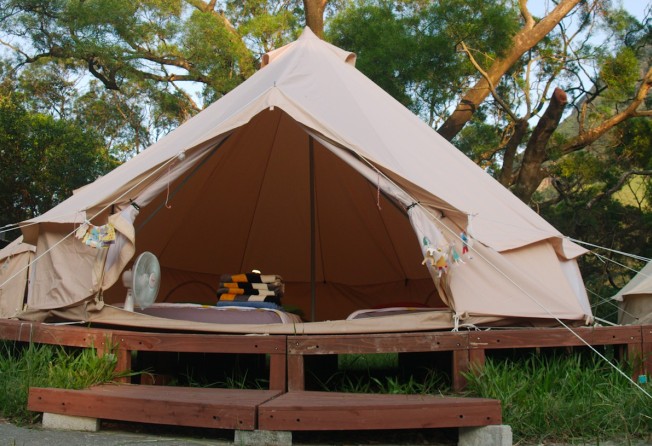
The slopes of Lantau Peak are bathed in the golden glow of evening sunlight as they tower above our traditional canvas bell tent. In the silence, it’s easy to imagine this “glamping” location is nestled in the remote foothills of the Himalayas, not a just a few kilometres from Hong Kong International Airport.
“I think tourism in Hong Kong is gradually changing from the city to the countryside,” says Terence
Lee King-chung, chief executive of the Youth Hostel Association (YHA), which runs this campsite.

In 2015, Lee and his colleagues decided to introduce glamping – luxurious camping – to the association’s SG Davis campsite and hostel at Ngong Ping. Concealed in woodland just a few minutes’ walk from the tourist attractions around the Big Buddha, his team installed three large, Bohemian-style canvas bell tents. They come with bedding, comfortable inflatable mattresses, soft pillows, rechargeable lights and fans, Wi-fi and even hairdryers.
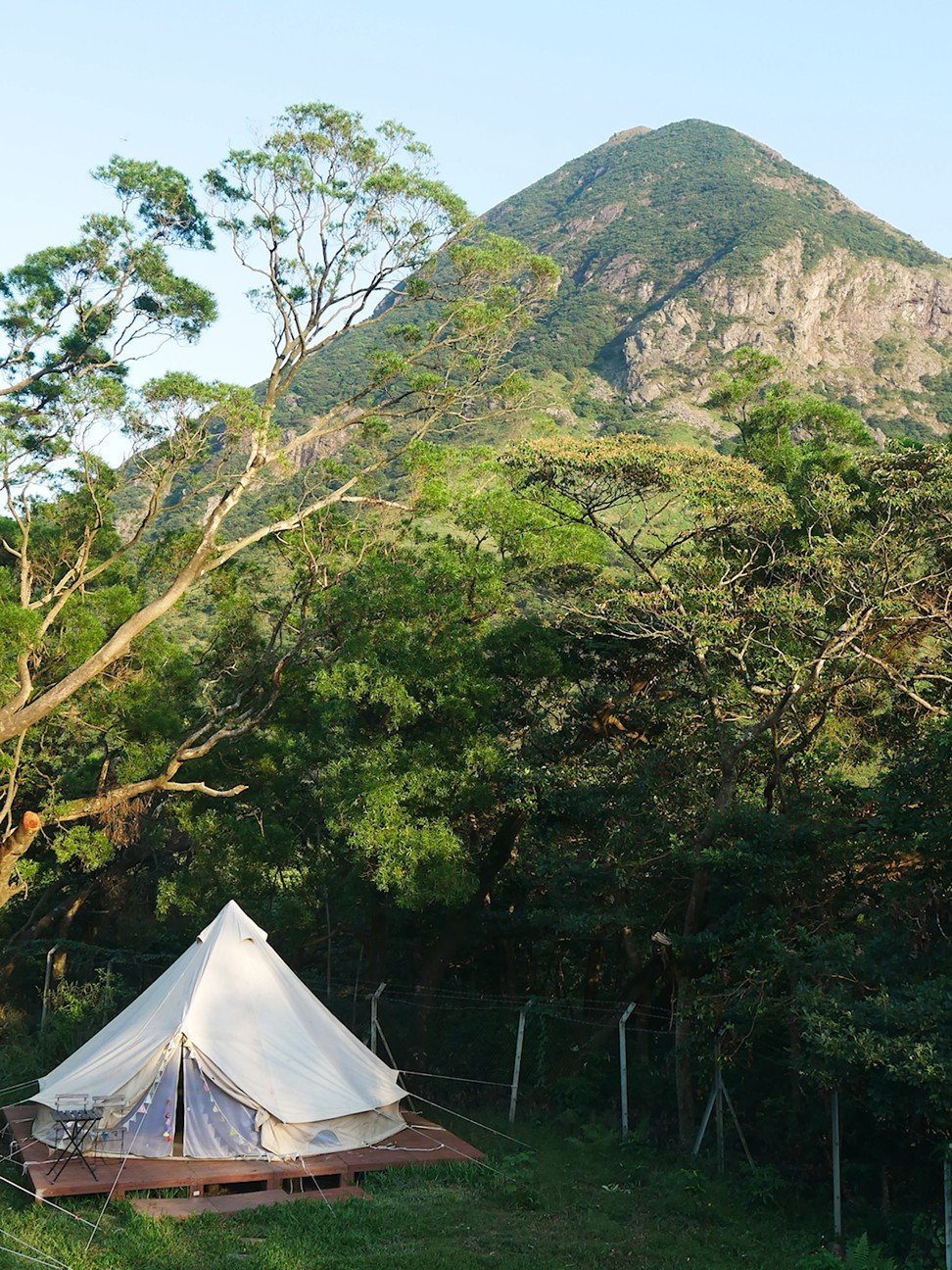
According the website glamping.com, “glamping is where stunning nature meets modern luxury … a fusion of glamour and camping”. In Hong Kong, the embryonic glamping scene is a little more modest. It might be more accurately described as camping without the agony and misery commonly associated with family holidays under canvas.
Seasoned veterans of traditional camping expeditions will recall miserable memories of wet sleeping bags, faulty gas stoves, acute sleep deprivation, walking with heavy backpacks, and lots of mud.
Many Hongkongers remain sceptical about the concept of decompressing by fending off mosquitoes and avoiding venomous snakes in a climate that can offer the camper anything from typhoons to steaming heat.
“Some are still worried about the outdoors, so we try to make it more inviting,” says Lee, who admits to something of a conflict between his organisation’s core ethics and the glamping preferences of many guests at SG Davis.
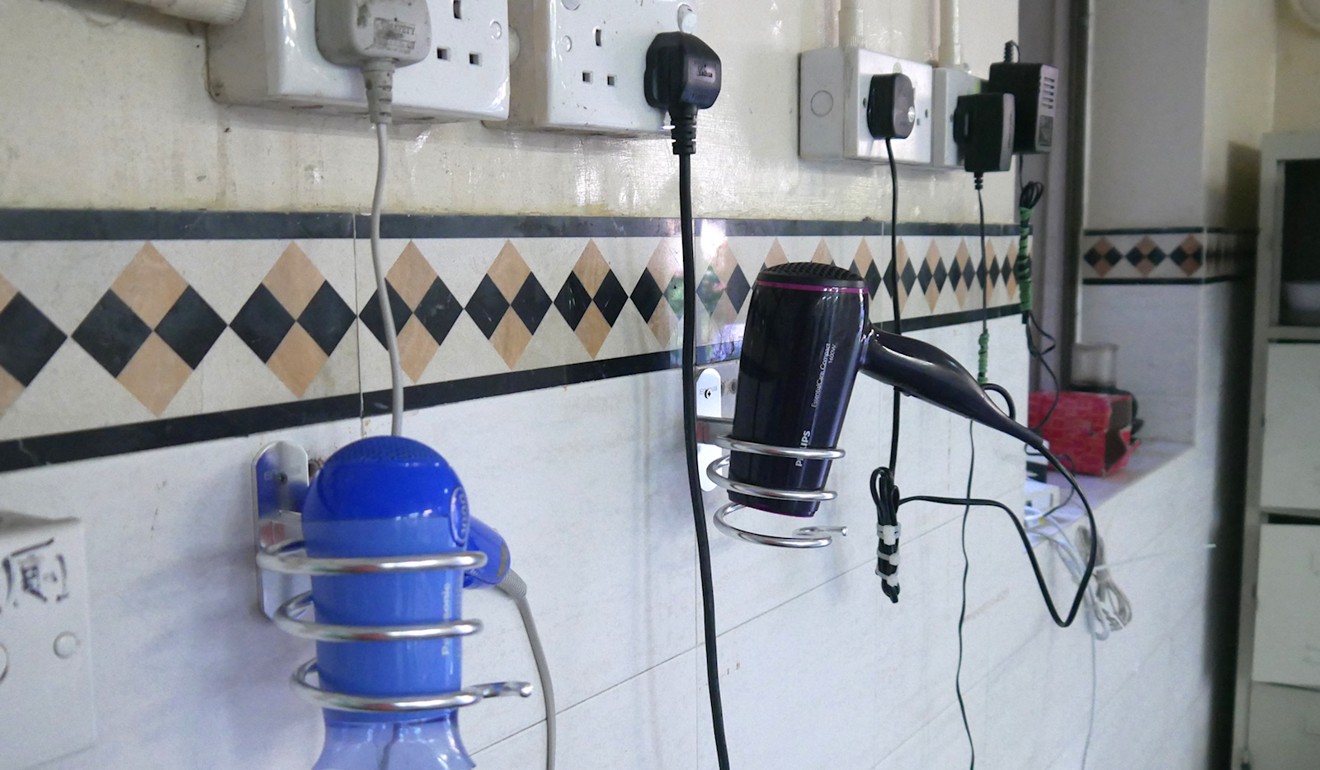
In Hong Kong people want somewhere quiet and peaceful, that offers something unique and is convenient and accessible
“We are trying to draw a line,” Lee says, although the association is considering introducing air-conditioned chalets to some of its sites. He also thinks an ultra-luxury glamping experience could work well in Hong Kong.
As night falls on Lantau Peak, we liberally apply complimentary mosquito repellent and await the flying insect assault with trepidation, but it doesn’t come. At this altitude, the night air is surprisingly cool, and blankets are issued by site manager, Cogent Chan Kwun-hong, as a precaution.
He says in the event of a T3 typhoon warning, all the tents must be taken down and guests transferred to the hostel building for their own safety.

Toilets and showers (with hot water) are in the hostel building, a short walk from the tents. It’s not exactly the Mandarin Oriental, but it’s very comfortable – and you can’t eat supper by the light of a blazing campfire in a five-star hotel.
Lee thinks that more should be done to make Hong Kong’s scenic wild places more accessible to the public because more people want to explore the natural beauty of these areas.
“This is a big trend for visitors [from China] and there is a huge potential for Hong Kong to develop,” he says.
The Agriculture, Fisheries and Conservation Department manages 38 campsites in Hong Kong. Many of them are in beautiful and remote locations along hiking trails, but this also makes them inaccessible and facilities are basic. Visitors using them need to be self-sufficient and experienced outdoor types, so it’s almost impossible for families with young children.
The Leisure and Cultural Services Department runs three campsites, including one with showers and toilet facilities by the beach at Pui O, Lantau Island, that is usually fully booked, even in the intense heat of summer.
“My view is that our countryside should be better utilised so more can enjoy it,” says Lee. But glamping options are thin on the ground.
In a remote corner of Cheung Chau, a new glamping experience is about to officially open, and has been taking bookings and offering trial stays since July. Sai Yuen is a site of about 4.5 hectares operated by the same team that set up the popular Palm Beach tepee glamping site, now closed, at Cheung Sha beach in south Lantau in 2008.
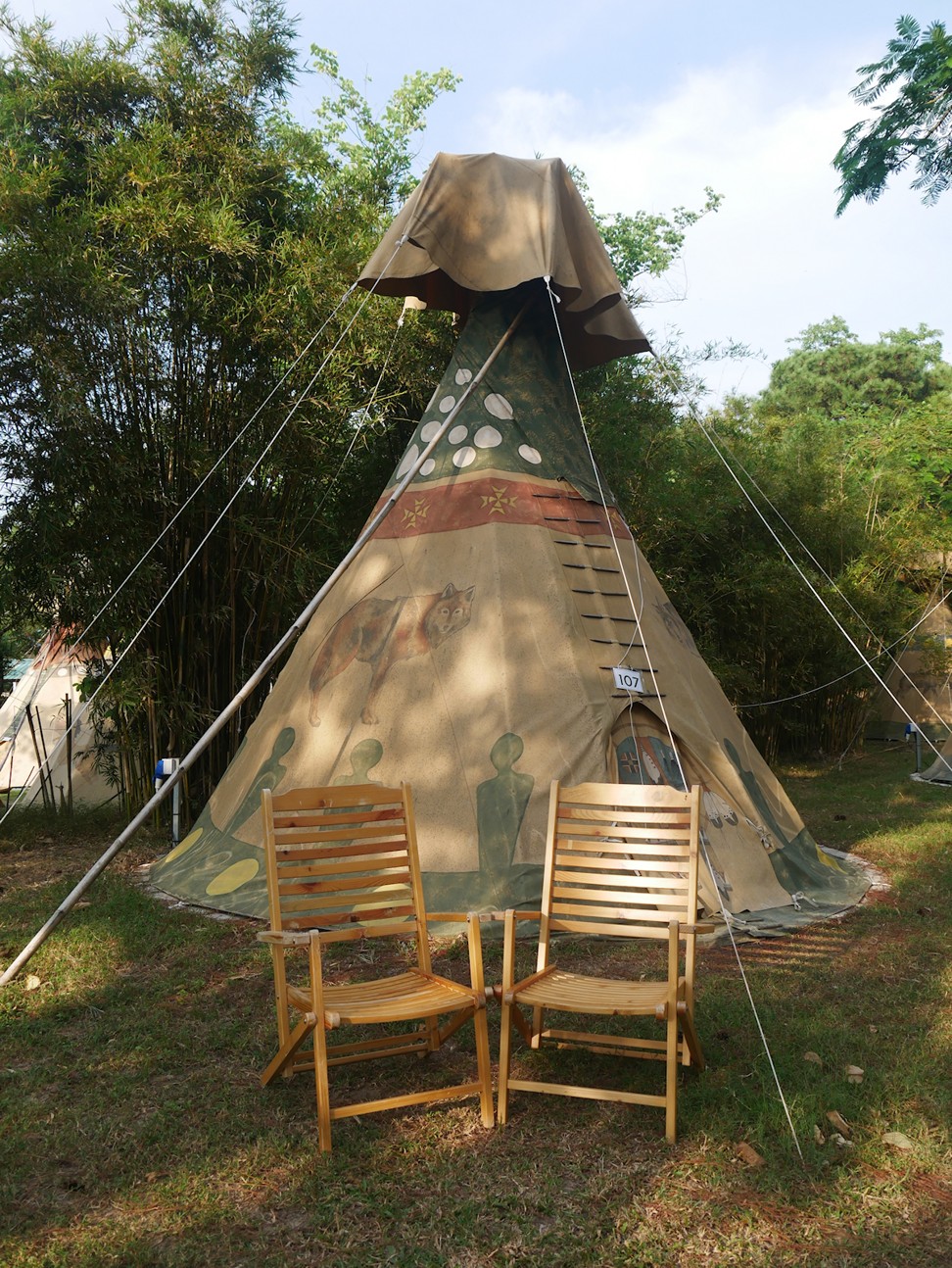
This is time for the kids to leave their iPhones and computers at home
The site also houses three Mongolian gers – circular canvas huts, inspired by the nomads of Northern Asia – and two stargazing geodesic domes with stunning sea views. Standards are high and prices are not cheap. Weekend nightly rates for a luxury African-style safari tent that can accommodate up to six adults start at just under HK$3,000.
Marketing manager Chan Wing-ching admits there is a traditional resistance to camping, but he thinks the trend is changing fast, and it’s the safari glamping that is proving most popular with local families. More basic glamping – in the tepees – is more popular among expatriates and overseas visitors.
“It’s a challenge, of course, because traditionally most Hong Kong people want air conditioning and don’t want outdoor activities,” Chan says, adding he sees a few raised eyebrows when guests learn there is no Wi-fi.

“This is time for the kids to leave their iPhones and computers at home,” Chan says, and thinks that an increasing number of parents want their children to enjoy family time in a natural environment, exploring.
At Sai Yuen, the emphasis is on outdoor adventure and recreation, with treetop canopy walks, zip lines and off-road Segway rides. There is even junior abseiling and jungle archery combat for those with a penchant for extreme sports. There is no television, though. Management prefer guests to engage in more old-school forms of entertainment, such as board games.
About HK$50 million has already been invested on infrastructure at Sai Yuen, while management has waited more than four years for all the appropriate government permits and land use documentation to be approved. Chan thinks one reason that there are so few glamping options in Hong Kong is that it’s very tough to overcome the bureaucratic hurdles and create a profitable business model.

Lo says: “My vision is that this is a wonderful natural environment, and people in the city just don’t get the opportunity to enjoy the countryside. Some of the guests cannot even light their own barbecue. I want them to have an experience they can treasure.”
I will always believe that there are more people longing to be close to nature than to concrete
He believes there is a growing demand for glamping-style leisure breaks offering access for young families to the great outdoors.
It’s not just Hong Kong residents and visitors from China who are warming to the idea of glamping. International visitors are increasingly common at Ngong Ping and Sai Yuen. One young couple staying in a Bohemian bell tent at Ngong Ping recently were from Britain, and another guest was an 83-year-old American woman on a five-week tour of China with her son.
Sophisticated and high-end visitors prefer to explore new destinations on their own terms, and immerse themselves in the local culture and environment. Although Hong Kong is blessed with extensive areas of country park, hiking trails, beaches and the Unesco-listed Geopark, tourism promotions are still geared primarily towards advertising shopping options and theme parks.
According to glamping.com, the glamping movement is growing and shows no signs of slowing down, as more travellers seek to explore nature and escape from the pressures of urban life without sacrificing too much in the way of modern comforts.
The Hong Kong glamping scene is still embryonic, but with vast natural capital, more families ready to engage with nature, and overseas visitors seeking an alternative experience, advocates including Lo think the potential is enormous.
“I will always believe that there are more people longing to be close to nature than to concrete,” he says.